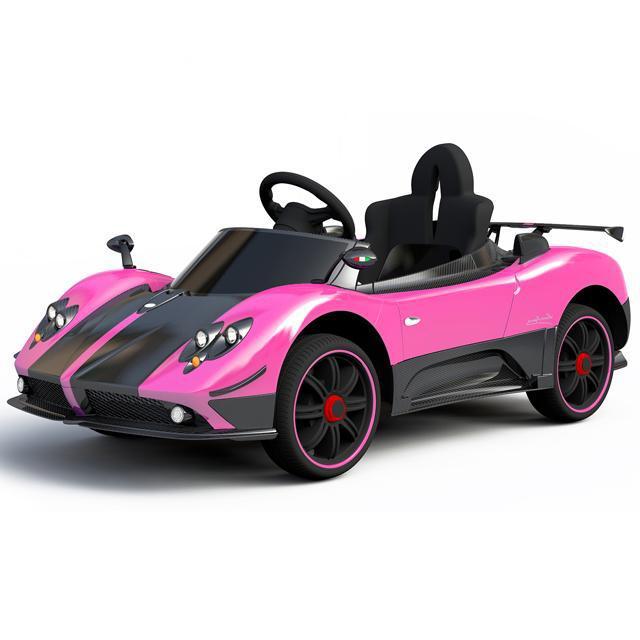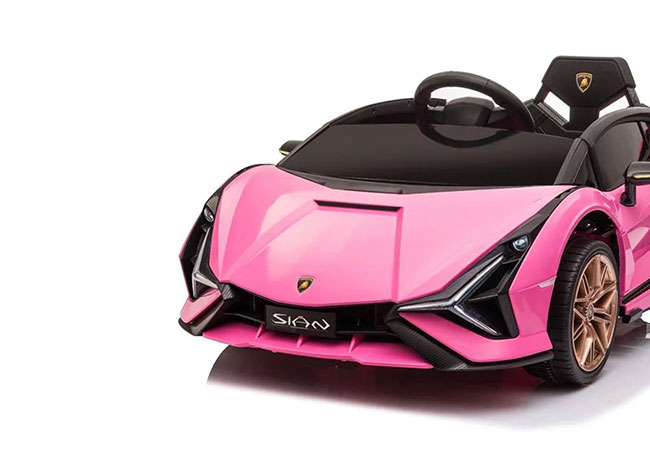Top Reasons To Deciding On Electric Kids Cars
Top Reasons To Deciding On Electric Kids Cars
Blog Article
What Ride-On Safety Features Should I Look At? Pros And Cons
The safety features in the child's ride-on vehicle are essential to their enjoyment. Seat Belts are one of the most crucial security features to be aware of.
Seat belts will help to protect your child and decrease the chance that they will fall out of the car or get expelled. Seat belts provide an additional layer of protection to your child during turns and sudden stops.
Cons – Some ride-ons cars particularly those designed for young toddlers, do not have seatbelts. Seat belts can also be uncomfortable for children, causing children to avoid or not want to use it.
Sturdy Construction -
Pros - A ride-on car made of sturdy and durable materials is more robust and resistant to damages that ensures long-term safety and dependability. It's designed to be durable enough to withstand the strains of playtime while providing stability.
Cons - Construction that is durable tends to be more costly, which makes it unaffordable for some families. The weightier materials used can reduce the maneuverability and mobility.
The Low Center of Gravity
Pros: Ride-on cars with a low centre of gravity have a less chance of tipping over. This decreases the risk of a crash or injury. They are more stable and provide better balance during maneuvers or turns.
Cons - Certain ride-on cars with a low center of gravity may sacrifice ground clearance or off-road capabilities, limiting their versatility in certain situations.
Remote control for parents' -
Pros: Remote-controlled rides on cars let parents supervise and help their children playing, adding an extra protection and security. Parents can intervene in the event of an emergency occurs, navigate difficult terrain, or avoid collisions.
Cons - Remote control for parents can hinder children's independence and autonomy, since they rely heavily on the supervision of their parents and help when playing. Additionally, remote-controlled cars may cost more than manual versions.
Speed Limiters
Pros - Ride on vehicles with adjustable speeds or speed limiters permit parents to choose the speed that is appropriate for the car. This decreases the chance of accidents and collisions. Parents can raise the speed of the ride-on car as their child becomes more confident and proficient.
Cons - Some riders might get used to the slower speeds quite quickly. This could lead to frustration with the car. Additionally, certain models might not have speed limiters or require additional options or features.
Safe Start Technology -
Pros The Safe Start Technology makes sure that the ride-on vehicles start and stop smoothly. This minimizes the chance of sudden jerks that could destabilize or startle the child. It's safer and comfortable to ride.
Cons – Ride-ons that come with safety-start technology may be more costly. Furthermore, children might not find the gradual acceleration to be less interesting or engaging as fast starts and stop.
Visibility Enhancements
Pros - Ride-on cars fitted with visible enhancements, such as working headlights, reflective material, or taillights improve the visibility of the vehicle. This is particularly true in dimly illuminated areas or conditions. They enhance safety since they allow the vehicle to be seen to other vehicles or pedestrians.
Cons - The enhancements to visibility can make the battery more drained or complicate the design of the ride-on cars, increasing the chance of malfunctions and maintenance issues.
Consider these security features, weigh their pros and cons, and choose a ride on vehicle that can be a priority for your child's security while still offering a fun and enjoyable time. Check out the top rated McLaren kids car for site info including 2 seater electric cars, ride ons, electric ride on, kiddies cars, ride on car, ride ons, pedal car, childrens electric ride on, 2 seater electric cars, toy cars toy car and more. . 
What Assembly And Upkeep Requirements Are There For Children's Rides On Cars?
For optimal efficiency, safety, and long-term durability kids' ride-on vehicles require some form of assembly. Here are the assembly and maintenance requirements for children's ride on vehicles.
The majority of ride-on cars are not fully assembled at the time of arrival and require some sort of assembly. Attaching the components, such as wheels, steering wheels and seats, in accordance with the manufacturer’s instructions, is the norm.
Assemble the components according to the instructions. Utilize the tools and hardware provided to complete the process.
Cleaning -
For the ride on car to look the best and perform effectively, regular cleaning is necessary. Use a soft sponge, or cloth soaked in water and mild soap to wash exterior surfaces.
Pay particular attention to places that are prone to accumulation including the tires, wheels, and undercarriage. Use a brush or a tooth brush to scrub areas that are difficult to reach and eliminate hard-to-remove dirt.
Avoid using harsh chemicals, abrasive cleaners, or high-pressure water sprays, since they could cause damage to the paint or electronic parts of the ride-on vehicle.
Battery Care
Care for your battery is vital when the ride-on is powered by rechargeable batteries. Proper battery care can maintain the performance of your ride-on and extend the battery's lifespan. Use these battery care guidelines to help you maintain your battery's health.
Charge your battery fully before the first use, and then every time you use it to ensure the longest running time.
The battery is not fully charged and keeping it in charge for prolonged periods can cause damage and shorten its life.
When not in use store the ride-on car and its battery in a cool, dry place far from direct sunlight.
Periodically inspect the battery terminals to check for any damage or corrosion and clean them using a terminal cleaner or wire brush if necessary.
Replace the battery when it's not in charge or if there are signs of damage.
Tire Maintenance -
Regularly check the tires for signs of damage, wear or air loss. Inflate the tires to the recommended pressure with a bicycle pump or air compressor if needed.
The tread pattern needs to be checked for foreign objects, debris or other obstructions which could cause flats. Replace or repair damaged tires by removing any obstructions.
Lubricate the wheel bearings, and other parts to ensure smooth and efficient rotation.
Sometimes, repairs or replacements are needed.
Even with regular maintenance, it's still likely that vehicles with ride-ons will need to be fixed or replaced with parts because of wear and tear or accidents.
Check for indicators of malfunctions, including unusual noises, a decrease in power, or an unsteady performance. Contact customer support or follow the specifications of the manufacturer for assistance in troubleshooting.
Replace worn-out or damaged parts promptly to prevent further damage and to ensure the safety and functionality of the ride-on vehicle.
You can make sure your kid's rideon car is in top condition by following these assembly and care guidelines. Your child will be able to enjoy numerous hours of safe entertaining and fun playing time. See the best go here for Audi kids car for site advice including riding digger, toy car toy car, childs ride on car, childs ride on car, toy and car, toy with car, ride ons, childrens electric cars, childs ride on car, electric ride on cars and more. . 
What Are The Different Kinds Of Remote Controlled Cars For Children? What Are The Advantages And Disadvantages?
Remote control cars for kids are also referred to RCs or remote controlled cars. They are available in a variety of styles, price points and sizes that will suit all budgets and tastes. Here's a brief overview of types, sizes, prices along with pros and cons of remote control children's cars Different types of remote controls for Children's Cars -
Electric RC Cars – Battery-powered remote controlled cars suited for use indoors or outdoors. They are available in a variety of styles including trucks, buggies or sports cars.
Nitro RC Cars – Gas powered remote controlled vehicles that have better performance but require greater maintenance. Electric RC cars are smaller and cost less.
Scale models are a replica of real-life vehicles, such as trucks and cars. They are also operated remotely. Scale model sizes range from 1-10 to 1--24. The larger models provide greater detail and more real-world realism.
Sizes -
Remote control cars for children come in a variety of sizes. The range of sizes ranges from small replicas to huge-scale models. The size of the vehicle will affect its speed, performance, and handling characteristics.
Micro-sized cars are small and light. They are ideal for indoor use, especially with young children. Cars with bigger sizes offer more power and durability and therefore are ideal for off-road or outdoor racing.
Prices
Prices vary based on dimensions, features and quality of construction.
Electric and Nitro RC vehicles at a higher scale cost anywhere from $100 to $500.
The price of scale models and hobby-grade RC vehicles range between a few hundred dollars to over a thousand dollars depending on their level of performance and the level of detail.
Pros and Pros and
Pros -
Adults and children alike can take pleasure in the thrills and excitement of remote-controlled vehicles.
Running an R/C car can help children to develop spatial awareness, problem solving and hand-eye cooperation.
Social Interaction: RC cars are ideal for social interactions with family and friends.
Aftermarket parts including upgrades, accessories, and other products from the aftermarket are a great way to personalize many RC vehicles and enhance their performance.
Cons
Cost – High-quality models with the latest features, like hobby-grade cars, can be expensive.
Learning Curve: Operating a RC vehicle requires time and practice. Children younger than 10 may be unable to manage the controls.
Maintenance is necessary for car owners who own RC vehicles. They need to clean regularly, lubricate and perform repairs or replace components.
Safety issues Safety Issues RC vehicles can be dangerous when they are not used properly under the supervision of an adult. They may create accidents, fall hazards and electrical hazards.
The most effective remote control for kids vehicles are ones that offer an educational and exciting experience to kids of all age groups. When choosing the right model for your child it is important to be aware of a range of aspects, including size, price features as well as security. Hobby-grade RC cars are better for older and enthusiast children however, simpler vehicles are more suitable for young and less experienced children. Follow the best Mercedes kids car kidscars.co.uk tips for more tips including toy in car, toy cars toy car, ride ons, childrens electric cars, a toy car, electric ride along car, car toy car toy, toy toy cars, ride ons, 2 seater electric cars and more. .